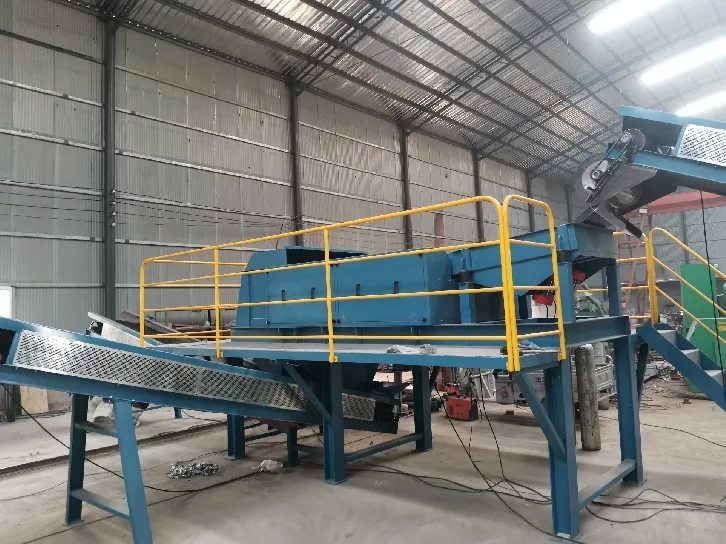

marras . 07, 2024 16:34 Back to list
DIY Copper Wire Granulator An Efficient Way to Recycle Copper Wires
In today's world, the recycling of materials is more important than ever. One of the most valuable recyclable materials is copper, commonly found in electrical wires. As technology advances and industries grow, the demand for copper increases, making copper wire recycling a lucrative and eco-friendly option. A DIY copper wire granulator is an excellent solution for individuals looking to reclaim copper from waste wires effectively. This article will guide you through the benefits, components, and process of creating your own copper wire granulator.
Understanding Copper Wire Granulators
Copper wire granulators are machines designed to separate copper from insulation and other materials in scrap copper wires. The granulation process involves shredding the wires into smaller pieces, allowing for the easy extraction of pure copper. While commercial copper wire granulators can be expensive, building your own can save money and give you the satisfaction of handling the recycling process yourself.
Benefits of Using a DIY Copper Wire Granulator
1. Cost-Effective Purchasing a commercial wire granulator can be quite costly, sometimes thousands of dollars. By building your own, you can save significant amounts of money.
2. Environmental Impact Recycling copper helps reduce the demand for new copper mining, which is often harmful to the environment. By reusing scrap copper, you contribute to a more sustainable future.
3. Profit Potential Recycled copper has substantial market value. By processing your copper wire, you can turn waste into a source of income.
4. Customization A DIY project allows you to tailor the granulator to your specific needs and scale, offering flexibility in processing capacity.
Key Components of a DIY Copper Wire Granulator

To create a functional copper wire granulator, you will need several critical components
1. Shredder A robust industrial shredder is needed to cut the wires down to manageable sizes. You could repurpose an old, heavy-duty shredder for this purpose.
2. Granulating Chamber After shredding, the wires need to go into a chamber to be broken down further. This could be made from a durable metal container where the granulating process takes place.
3. Separation System Once the wires are granulated, you need a method to separate copper from insulation. This can be accomplished using air separation or a vibrating table.
4. Power Supply Depending on your design, you may need an electric motor to power the shredder and granulating chamber.
5. Safety Equipment Safety is paramount when working with machinery. Protective goggles, gloves, and ear protection should be worn at all times.
The Granulation Process
Once your DIY copper wire granulator is assembled, you're ready to start processing wires. Begin by feeding the scrap wires into the shredder. Once shredded, transfer the pieces to the granulating chamber, where they are pulverized further. The granulated material can then be passed through the separation system, which will effectively extract pure copper from the remaining insulation and other components.
Conclusion
Building a DIY copper wire granulator is an excellent project that can yield significant rewards. Not only does it enable you to recycle copper efficiently, but it also contributes positively to the environment by reducing waste. With the right components and safety measures in place, you can set up a functional and effective copper wire granulator at home. Embrace the recycling movement, and enjoy the benefits of turning scrap into cash while helping to protect our planet.
Latest news
Troubleshooting Common Eddy Separator Problems
NewsJul.04,2025
The Role of Metal Recycling Plants in Circular Economy
NewsJul.04,2025
The Impact of Recycling Line Pickers on Waste Management Costs
NewsJul.04,2025
Safety Features Every Metal Shredder Should Have
NewsJul.04,2025
How Industrial Shredders Improve Waste Management Systems
NewsJul.04,2025
How Cable Granulators Contribute to Sustainable Recycling
NewsJul.04,2025